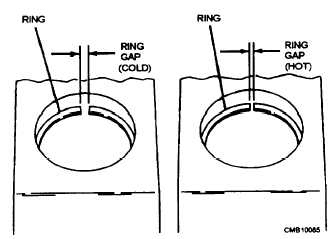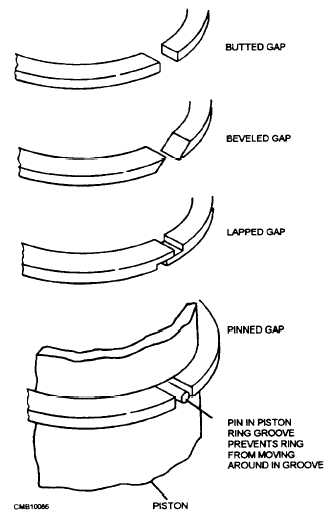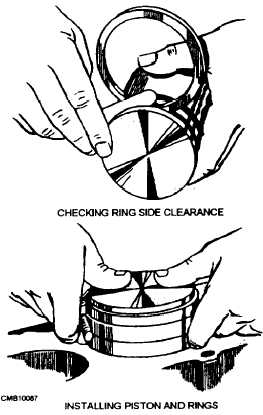
Figure 3-34. - Ring gap.
There is an additional groove cut into the piston just above the top ring groove. The purpose of this groove is to divert some of the intense heat that is absorbed by the piston head away from the top ring. This groove is called a HEAT DAM.
RING GAP (fig. 3-34) is the split in the piston ring. This is necessary for installing the ring on the piston and allowing for expansion from heating. The gap must be such that there is enough space so the ends do not come together, as the ring heats up. This would cause the rings to break. There are a few variations of ring gap joints (fig. 3-35). Two-cycle engines usually have pins in their ring grooves to keep the gap from turning. This is important because the ring would break if the ends were allowed to snap into the inlet or exhaust ports. Staggering the ring gap is also important as it prevents blow-by. A significant amount of total blow-by at the top ring will be from the ring gap. For this reason, the top and second compression rings are assembled to the piston with their gaps 60-degrees offset with the first ring gaps.
Rings must also be fitted for the proper side clearance (fig. 3-36). This clearance varies in different types and makes of engines; however, in a diesel engine, the rings must be given greater clearance than in a gasoline engine. If too much side clearance is given the rings, excessive wear on the lands will result. If there is too little side clearance, expansion may cause the lands to break.

Figure 3-35. - Ring gap variations.

Figure 3-36. - Fitting piston ring and installing piston.
Continue Reading